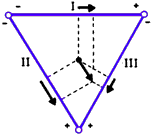

These days the competent RMO will often need to record and interpret an ECG within a few minutes of admission and to base very important decisions upon what is shown in the trace. This is especially so in the assessment of patients with chest pain, rhythm disturbances and turns. Medical students are advised to learn sound recording techniques, to be able to identify the features of acute coronary disease, atrial and ventricular arrhythmias and the key features of heart block. It is also important to be able to recognise the situations in which confounding factors such as poor electrode position, electrical interference, normal ECG variants, electrolyte disturbances and drug effects interfere with the reliable assessment of the electrocardiogram.
Samuel has shown great enterprise in compiling this selection of tracings and for preparing the helpful vignettes that accompany each graph. I support this approach in learning about ECGs. I anticipate that many senior students will profit from using a problem-solving approach as they work their way through the tracings that he has selected.

David McHaffie
Senior Lecturer,
Cardiologist,
WPH
2001